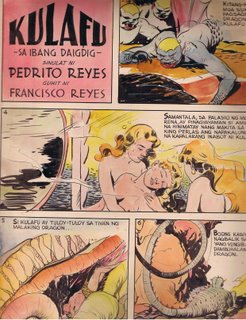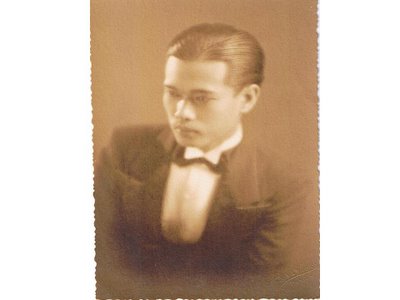“KENKOY is the Philippines’ first true pop icon. He is a ludicrous portrait of the Filipino…pathetically trying but barely succeeding in keeping up with his American mentors”—Nonoy Marcelo
KENKOY: 1. Isang nakakatawang karakter sa Komiks na nilikha noong 1929 na may maluwang na pantalon at plastadong buhok. 2. Isang mapagpatawang tao. – U.P Diksyunaryong Filipino, University of the Philippines Press

Long before the era of the movie stars and showbiz celebrities, there already was a Philippine pop icon named Francisco Harabas, or more popularly known as Kenkoy.
Kenkoy is your everyday funny man. He was a debonnair, bombastic, irreverent, hilarious, and best-loved.
Francisco “Kenkoy” Harabas was born on the pages of Liwayway on January 11, 1929. Unlike us, however, he did not go through infancy and childhood, but was born straight from the conception of Romualdo Ramos and the brush and ink of Tony Velasquez.
Kenkoy came into this world garbed with the latest fashion of his time, the Jazz Age of F. Scott Fitzgerald, where London-style checkered baggy pants (its hems as wide as one’s shoes), a sailor hat, and a double-breasted polo complete with suspenders, were the leimotifs of the age.
Says Tony Velasquez: “
Kenkoy is always pusturyoso…He wore suspenders even before Frank Chavez made them fashionable”
Born during the American period when Western influences were beginning to encroach into Filipino culture, Kenkoy adapted to the changing of his times, making fun of the old mores, and up-to date in the latest trappings of Western fashion. He mouthed the "pidgin" language fashionable among youth at that time, which was a mixture of Spanish, English and Tagalog languages. Resulting in what was later known as “
Taglish” and “
Spangalog”. Thus was born Kenkoy's trademark dialogues like Halo, how is yu?, watsamara (what's the matter), dats oret (that’s alright), nating duwing (doing nothing), okidoki (okeydokey), lets tek ewok (let’s take a walk), is beri nesesari, and bay gali.
Even today, this mangling of the languages proved an effective technique of humor, recently used to comic effect by actor-comedian Jimmy Santos.
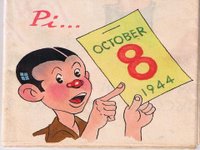
Kenkoy was always in a hilarious misadventure or “kabalbalan”: painting the town red, gate crashing into birthday feasts, attending carnivals and fairs, and, of course, courting Rosing, the immaculate and impeccable Manilena.
Rosing was the epitome of the ideal and much romanticized Filipina. She would not be seen in anything other than the traditional
baro't saya or the Sunday
camisa y panuelo. She displayed the typical characteristic of a "Maria Clara”: timid, shy and impeccable,
carinosa yet
selosa, but who can also be
matampuhin, and often demonstrates the Filipino value of
pagpapahiwatig, which is to show emotions through non-verbal hints, without completely revealing her thoughts.
The Kenkoy and Rosing romance was one of the most enduring and fascinating love story in the history of the print media, a tale that had always been loved by the Filipinos. It was a story made more interesting due to the conflict provided by Kenkoy’s perennial rival, Tirso S. Upot.
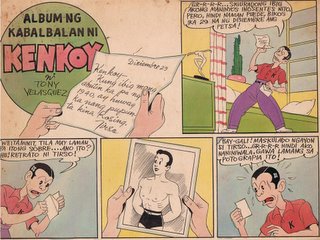
Tirso was not the stereotype rival, however, because unlike Kenkoy, he was "
guwapo". This makes his character lovable instead of being loathed. There were times when Tirso would get the full attention of Rosing, stealing the show from Kenkoy, to the great anger of our hero.
Kenkoy and Tirso made elaborate schemes to trap each other, but for most of the times, these traps would always backfire to each other. Their comic rivalry for the attention of Rosing provided for most of the strip's early plot.
Kenkoy and Rosing eventually got married and they had several children: Dayunyor Dyulie, Tsing, Doy, Dalisyosa, Etot, Nene, and Piching. They also adopted a child, the wily mute but cute Tsikiting Gubat.
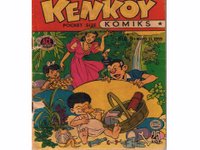
The Harabas family became the most read about family in the entire Philippines, and Filipinos loved to read their story. Their familial affairs mirrored the Filipino family in general, even before the time when Pinoy TV sitcom John and Marsha did the same in the 1970s.
This is possibly the greatest difference of Kenkoy and pals with the other cartoon strips of his time, both foreign and local. While Mickey Mouse, Betty Boop, Blondie, Lil Abner, Popeye or Bugs Bunny, would forever be the same in accordance with their respective creators' original conceptions, Kenkoy and his pals would grow with the times, because theirs was a continuing story. They would get married, have children, their mores and actuations grow in accordance to the current trends of Filipino culture.

Thus, in the 1960s when the suspenders, charol shoes, and the baggy pants became out of fashion, Kenkoy had shed them in favor of the more fashionable “beatles” pantalon, collared sport polo, and Converse rubber shoes.
“
Si Kenkoy ay laging nasa uso” said Velasquez.
One thing about Kenkoy has not changed, however. It was his hairstyle, which remained slicked back and plastado as before, forever reflecting a four-paneled window. In fact, it is Kenkoy’s most recognizable trademark.
Perhaps only Rosing would retain her original look just as she first appeared in the Liwayway. Up to the 1960s and well into the 1990s (Di Ritarn of Kenkoy), when the mini-skirts were in fashion, she would still wear the traditional
bakya and
baro at saya. Indeed, her provinciana character
could not be reconciled with the more outlandish attire of the modern times.
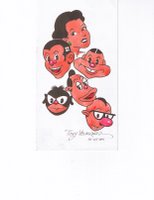
On October 29, 1991, on the 81st birthday anniversary of Kenkoy creator Tony Velasquez, a tribute was celebrated in Mnila Hotel to honor the great Kenkoy Harabas, with Senator Heherson Alvarez as Guest Speaker. The funny thing was that during the ceremonies, Senator Alvarez insisted on emceeing the tribute himself. He said “
I am such a big fan of Kenkoy, and I won’t pass this opportunity to be an emcee to this important event”. He also pledged to sponsor Tony Velasquez as a National Artist of the Philippines.

Today Kenkoy is already seventy-six years old, but he has not grown old, he is still here….debonnair, bombastic, irreverent, hilarious, and best-loved…..I could always figure him out from the great multitudes of other comic characters he had helped paved the way in the Philippine comics scene…He grins and says mischievously….”Bay Gali! watsamara?”
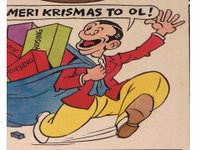



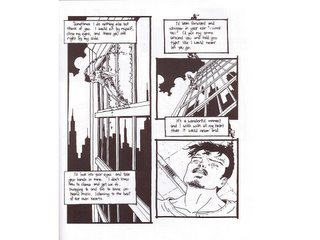
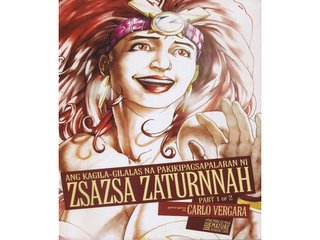
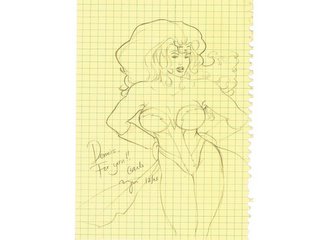





 On October 29, 1991, on the 81st birthday anniversary of Kenkoy creator Tony Velasquez, a tribute was celebrated in Mnila Hotel to honor the great Kenkoy Harabas, with Senator Heherson Alvarez as Guest Speaker. The funny thing was that during the ceremonies, Senator Alvarez insisted on emceeing the tribute himself. He said “I am such a big fan of Kenkoy, and I won’t pass this opportunity to be an emcee to this important event”. He also pledged to sponsor Tony Velasquez as a National Artist of the Philippines.
On October 29, 1991, on the 81st birthday anniversary of Kenkoy creator Tony Velasquez, a tribute was celebrated in Mnila Hotel to honor the great Kenkoy Harabas, with Senator Heherson Alvarez as Guest Speaker. The funny thing was that during the ceremonies, Senator Alvarez insisted on emceeing the tribute himself. He said “I am such a big fan of Kenkoy, and I won’t pass this opportunity to be an emcee to this important event”. He also pledged to sponsor Tony Velasquez as a National Artist of the Philippines.  Today Kenkoy is already seventy-six years old, but he has not grown old, he is still here….debonnair, bombastic, irreverent, hilarious, and best-loved…..I could always figure him out from the great multitudes of other comic characters he had helped paved the way in the Philippine comics scene…He grins and says mischievously….”Bay Gali! watsamara?”
Today Kenkoy is already seventy-six years old, but he has not grown old, he is still here….debonnair, bombastic, irreverent, hilarious, and best-loved…..I could always figure him out from the great multitudes of other comic characters he had helped paved the way in the Philippine comics scene…He grins and says mischievously….”Bay Gali! watsamara?” 


















